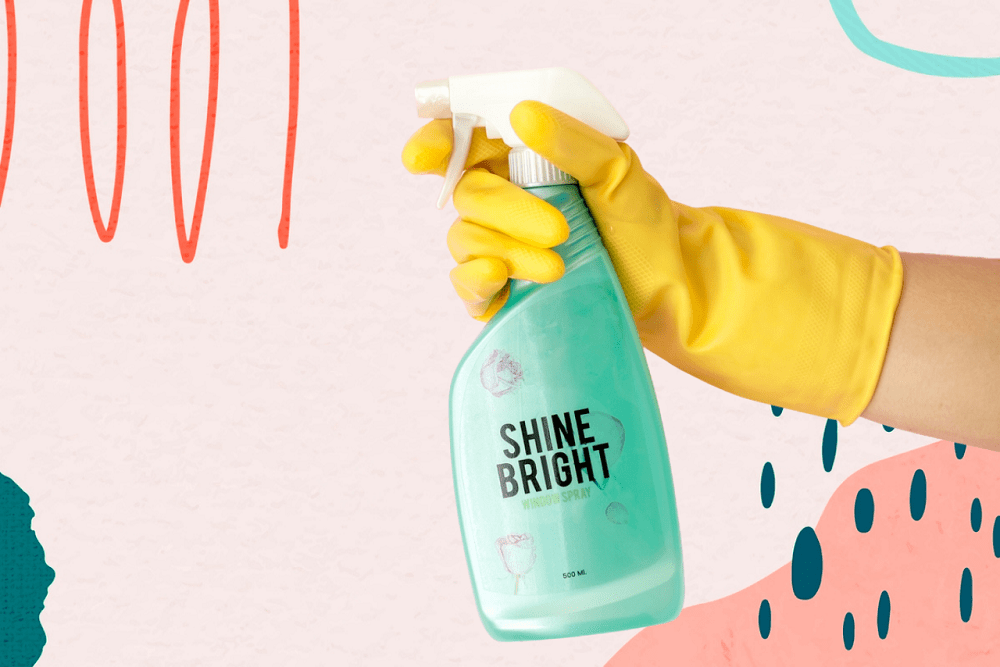Hey, no one ever actively wanted to work in a dirty office, but the global pandemic has really brought home the importance of employee safety and security in the workplace, and the impact cleanliness can have on that.
Perhaps ‘brought home’ is the wrong term there. Instead, the ever pressing need for cleanliness, sanitation and safety has been brought into the office, and if your staff have recently returned there then it’s essential that you’re running a workplace that encourages peace of mind.
In a recent report published by CNBC, the importance of ‘healthy buildings’ in enticing workers back into the central office space was highlighted. One of the best ways to do this as the world opens up and offices get repopulated is to instill a more disciplined cleaning regime in your workplace. With that in mind, for responsible employers, here are 6 crucial ways to keep your office disinfected and clean.
START AT THE BOTTOM, WORK YOUR WAY UP
According to an investigation by real estate experts JLL, ‘’traditional cleaning methods are being upgraded amid heightened expectations around hygiene’’. They go on to report that there has been a huge rise in interest in floor cleaning robots in the USA, with four fifths of businesses now considering ‘’cleanliness and sanitation their top concern’’.
Here in the UK, the robotic cleaning revolution hasn’t quite picked up the same speed, but that doesn’t mean you can’t clean your office’s floors with precision. As explained by the folks behind Glenn Cleaning & Support Services, a simple process of daily vacuuming can help reduce the number of contaminants in your carpet by up to 85%. When combined with mopping of hard floors, you’ve laid a sanitised foundation for future success.
Bear in mind that hard floors don’t trap dirt and microbes in the same way that carpeted ones do. This, it has to be said, is a blessing and a curse. But in the terms of the latter, all sorts of bacteria and – potentially, at least, viruses – can be kicked into the air and breathed in. As such, disinfecting hard floors more regularly than usual is a wise move. Usually, you should use bleach for this, but if your floor is porous and therefore not safe for use with bleach, then a mixture of water and white vinegar produces similar results.

EVERYDAY ITEMS THAT MIGHT GET MISSED WHEN SANITISING
There are several items in the workplace that are often overlooked for a thorough sanitising effort, but which may actually harbour more germs than some more obvious places around the office.
Did you know, for instance, that according to the London School of Hygiene and Tropical Medicine, every 1 out of 6 smartphone screens is contaminated with faecal material. The study also declared that the average smartphone is 7 times dirtier than a toilet. Wow.
Keyboards are another item that come into contact with our fingers constantly and accordingly, bacteria and viruses can often be found lurking in the crevices of each and every key. The same goes for the office kettle, landlines in the workplace and, of course, door handles.
A sanitising regime, including education about these often missed items, is essential, then.
CLEAN THE AIR CONDITIONER FREQUENTLY
Research published by the Lawrence Berkeley National Laboratory (as highlighted in that JLL report we mentioned earlier) has suggested that improving indoor air quality in offices could add as much as $20 billion annually to the US economy.
This is because air quality plays a key role in staff contentment and productivity. One of the best ways you can improve air quality in your office is to clean air conditioning units regularly.
If you don’t want respiratory illnesses or other types of infections spreading through your office (you don’t; no one does), make sure that the air conditioner in your office has its vents and filters cleaned thoroughly once every three months (for companies that require 24-hour operations). This will not only keep contaminants away but also help maintain the quality of air inside your establishment.
Read: 5 maintenance tips to maximise your air conditioner’s efficiency
Other ways to improve the air quality of your office and boost staff morale is to introduce some greenery in the form of indoor plants. Certain house plants can also assist in enhancing interior air quality, which may help in the alleviation of the symptoms of sick building syndrome.
An office setting with air-purifying plants, such as spider plants and chrysanthemum, can improve the atmosphere in more ways than one. And even if the science behind the air purifying qualities of plants sometimes grows out of shaky ground, the aesthetic lift they bring can’t be denied. For something simple to care for and attractive, too, you can’t go wrong with succulents.
Adequate ventilation is also more important that ever, so if you have the budget, consider installing new windows or bivalve doors in your office.

PROVIDE PERSONAL HAND SANITISERS & FACE MASKS
Sure, you could set up hand sanitation stations (you should, in fact), but if you’re keen to show off your caring credentials, why not hand out a simple PPE kit containing waterless hand sanitizers or alcohol-based gels, which are proven to kill up to 99% of germs.
Not only will this help reduce illness in your workplace but it will also inspire employees to maintain cleanliness even outside the office – when on the commute for example – by using these items regularly.
As well as this, in these personal safety kits, why not include spare face masks for those who choose to wear them, and antibacterial wet wipes for disinfecting those commonly forgotten places we mentioned earlier.
KITCHEN CLEANLINESS
Kitchens are also a haven for bacteria. They are the breeding ground of microorganisms because they contain food items that provide nutrition to these organisms, while the moist environment inside the kitchen provides an excellent medium for growth.
One solution is to wipe your kitchen’s surfaces clean with disinfectants at least twice a day or after every meal preparation.
Make it a point to provide different types of cleaners depending on the type of surface that you have in your office kitchen, whether it be stainless steel, plastic, ceramic, or porcelain. You should also keep in mind that disposable towels and sponges should only be used for specific tasks, such as wiping off countertops and surfaces exposed to spills. Installing a dishwasher would further reassure staff of your cleanliness intentions.
It is important to make sure that the products you use to clean your office are top-notch, organic and harmful chemical free as well, not only for staff safety but also a statement that you, as a responsible employer, value your staff.
ALLOW FOR FLEXIBLE WORKING TO REDUCE UNNECESSARY FOOTFALL
A crowded office is one more likely to foster germs and one far more difficult to keep spotlessly clean. Accordingly, and as the responsible employer that you’re striving to be, make sure that options for flexible working, whether that’s a hybrid or an at-home model, are on the table for your staff. Check out these tips on ways to encourage a flexible working environment for more on that.
THE BOTTOM LINE
As you can see it is really not difficult to maintain hygiene in your workplace. All you need are the right tools and the proper know-how on how to properly clean your office space. If you don’t have enough time or resources for more complex methods of sanitation, you can always start with the basics and work your way up from there. Just make sure that you have a plan in place before going all out so that you can guarantee results without compromising health and safety standards.




